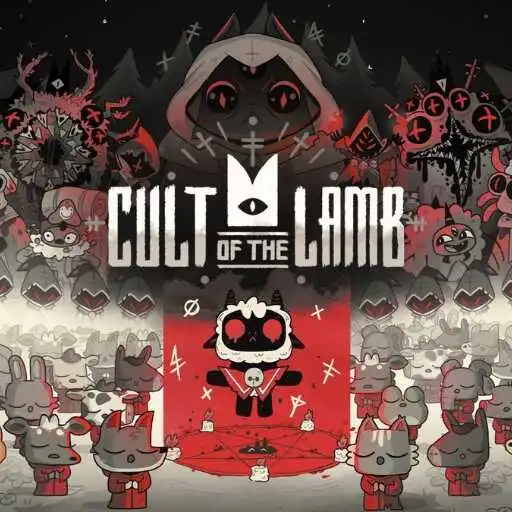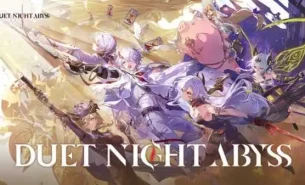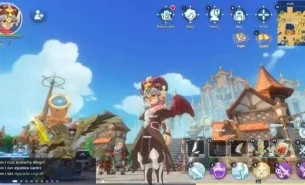Unholy Alliance Co-Op: Best Two-Player Builds & Camp Roles

In August 2024, Cult of the Lamb introduced its free Unholy Alliance update—finally bringing local co-op play to the game. Players can now team up as The Lamb and The Goat, coordinating combat, base management, and cult growth side by side.
This shift to co-op changes how you approach runs. It’s no longer just about solo optimization—successful duos depend on complementary builds, card/relic synergy, and clear camp roles. In this article, we’ll walk you through the best two-player builds, powerful tarot + relic combos, and how to split camp work for maximum efficiency.
Co-Op Basics: How to Start & Unique Mechanics
To enable co-op, pause the game, choose “Add Co-Op Player”, assign inputs, and summon the Goat. Player two becomes the Goat, controlled either by controller or mapped input.
Some features are exclusive to co-op:
- Co-op Tarot Cards: Unique ones like The Comrades, The Synchronous, Bonds of Battle, The Rivals, etc. that reward coordination.
- Co-op Relics: These include Cross Eye of the Crow, Kudaai’s Lost Tooth, Wishbone of the Marbais, The Clasped Hands, and more.
- Weapon & curse swapping: The Lamb and Goat can swap weapons or curses mid-run to adjust roles.
- Synchronized attacks & back-to-back damage: If both players attack together or position side by side, they gain bonus effects.
However, co-op is local only—there is no native online multiplayer. Steam Remote Play can substitute, but that requires both players on PC.
So co-op shifts the playstyle: you must plan builds together, communicate, and lean on pairing strengths.
Best Two-Player Builds & Synergies
In co-op, you don’t want both players doing the same thing. Instead, aim for complementary builds. Here are core themes and pairing ideas:
1. Role Differentiation
- Heavy DPS + Utility / Support: One player goes for high damage, the other for buffs, stuns, or control
- Burst / Burst hybrid: Dual offense—both focus on damage but with different niches (fast vs heavy)
- Tanker + glass cannon: One focuses on survivability, the other on raw damage output
- Synergy blend: both moderate builds but balanced to adapt to each other
2. Weapon & Curse Synergy
- If one player uses a fast, low-damage weapon, the other might use a slower weapon with high burst to manage tough mobs
- Use curses that complement weapon weaknesses (e.g. one uses a curse that weakens armor while the other uses armor-piercing)
- Swapping is allowed: if you pick up something stronger mid-run, trading may optimize both builds
3. Suggested Build Pairings
| Player A (Damage) | Player B (Support / Control) |
|---|---|
| Scourge’s Scythe + Curse X | Defensive weapon + stun/slow curse |
| Rapid weapon (dagger type) | Buff relics + healing or sacred card combo |
| Balanced sword + elemental curse | Crowd-control + splash damage |
Don’t forget: co-op perks—synchronized attacks and back-to-back positioning—boost both builds when used well.

Co-Op Card Combos & Relic Synergies
One of co-op’s strengths is letting two players lean into each other’s deck and relic picks. Here’s how to optimize:
1. Co-Op Tarot Cards
- The Comrades: When close together, both deal double weapon damage.
- The Synchronous: Critical hits if both attack simultaneously.
- Bonds of Battle: A beam connects players—any contact with enemies causes damage.
- The Rivals: If each player fights apart, they deal double damage in their separate fights.
- Flint and Steel: Rolling through the other player may trigger explosions.
Choose cards that encourage coordination or reward splits, based on your pairing.
2. Co-Op Relics
- Cross Eye of the Crow: Launches an eye that moves between both players, damaging enemies on touch.
- Kudaai’s Lost Tooth: Swap your weapon and curse with your partner.
- Wishbone of the Marbais: When you take damage, your partner is invincible for 10 seconds.
- The Clasped Hands: Heal both players half a heart.
- Ashes of the Mercurial Mun: Creates a shared ring zone benefiting both.
Sample Synergy Setup
- Player A holds The Comrades + Cross Eye of the Crow
- Player B picks Flint and Steel + Kudaai’s Lost Tooth
- As you move in groups, Comrades gives damage boost; Cross Eye gives extra projectiles; Tooth lets you swap if enemy resistances differ.
Mix and match based on run type. Some runs favor supporting synergy; others favor split strategies.

Camp Roles & Division of Labor
Running your cult side-by-side means you’ll need to divide camp duties to remain efficient.
1. Base Tasks
- Resource gathering and clearing: Two players can clear more base obstacles (rocks, trees) faster.
- Construction: One person focuses on building or upgrading, the other on collecting or stabilizing.
- Cleaning & maintenance: Pest control, removing debris, hauling materials.
2. Management & Rituals
- One player can handle follower management (assigning jobs, punishing dissenters), while the other handles sermons, rituals, or preacher tasks.
- Utilize the Nursery structure: care for baby followers so the other player can focus elsewhere.
3. Mini-games & Knucklebones
- The new Knucklebones Table structure allows you to play matches daily; a player can compete vs a follower or even vs the Goat.
- Split engagement: one player plays, the other handles base throughput.
4. Emergencies & Dungeon Duty
- If dungeon pressure calls, one player may stay behind to hold base in emergencies while the other leads a crusade.
- Ensure someone is always ready to revive the other in combat. Co-op allows revival so long as one heart remains.
5. Communication & Coordination
- Decide early: who leads in route choices, who picks dirts, who lures enemies, etc.
- Watch each other’s health and positioning.
- Be mindful of who opens dialogues — the player who initiates room text/choices often controls outcome.
Tips & Common Mistakes in Co-Op Runs
- Priority on leader role: The first to enter a room controls dialogues, loot, and choices. Be consistent.
- Don’t stray too far apart — co-op mechanics often require proximity to trigger shared buffs or abilities.
- Balance builds across both players, not just mirror each other.
- Use revives wisely — sometimes holding back to revive is safer than risking both down.
- Plan tarot + relic picks ahead so both complement each other instead of conflicting.
- Split base work smartly — a poorly managed base slows everything.
Conclusion
The Unholy Alliance co-op mode transforms Cult of the Lamb from a solo cult builder into a duo strategy adventure. The best runs emerge when the Lamb and Goat play as a coordinated team: choosing complementary builds, combining cards and relics, and dividing camp duties wisely.
Don’t hesitate to experiment—some of the most effective pairings are those tailored to your playstyle and synergy. Whether you lean heavy damage, control, or support roles, co-op encourages cooperation, dynamic decision-making, and creativity.







There are no comments yet :(